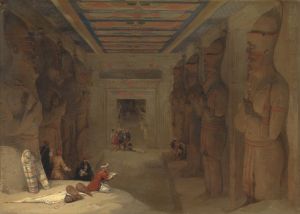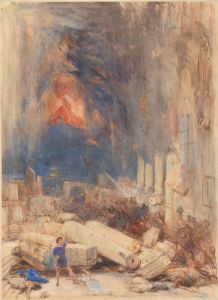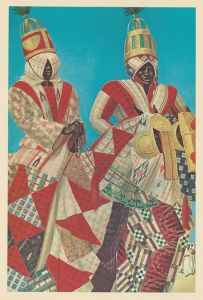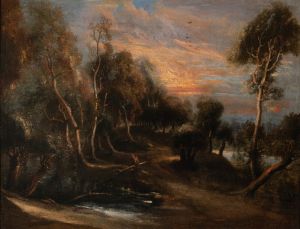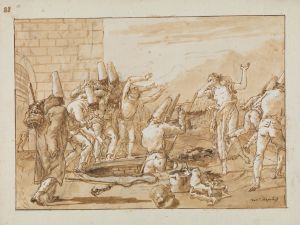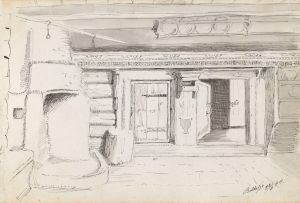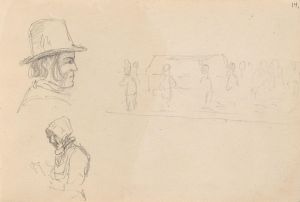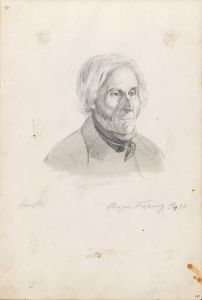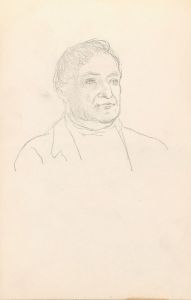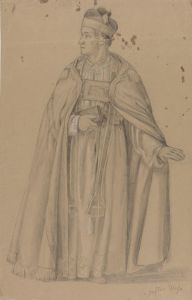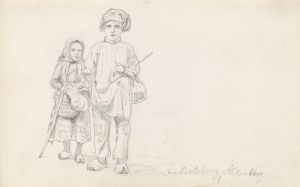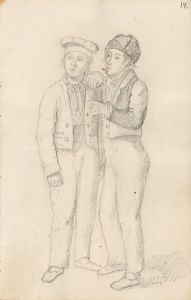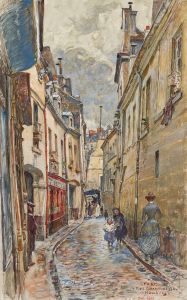
Kråskap, Gulsvik
A hand-painted replica of Adolph Tidemand’s masterpiece Kråskap, Gulsvik, meticulously crafted by professional artists to capture the true essence of the original. Each piece is created with museum-quality canvas and rare mineral pigments, carefully painted by experienced artists with delicate brushstrokes and rich, layered colors to perfectly recreate the texture of the original artwork. Unlike machine-printed reproductions, this hand-painted version brings the painting to life, infused with the artist’s emotions and skill in every stroke. Whether for personal collection or home decoration, it instantly elevates the artistic atmosphere of any space.
Adolph Tidemand was a prominent Norwegian painter known for his detailed and realistic depictions of Norwegian folk life and traditions during the 19th century. His works are celebrated for their ethnographic accuracy and artistic quality, capturing the essence of rural Norway during a time of national romanticism. One of his paintings, "Kråskap, Gulsvik," exemplifies his dedication to portraying the cultural and social aspects of Norwegian life.
"Kråskap, Gulsvik" is a painting that reflects Tidemand's interest in the everyday life and customs of Norwegian people. While specific details about this particular painting are scarce, it is consistent with Tidemand's broader body of work, which often focused on rural scenes and the lives of ordinary people. His paintings typically feature detailed and vivid representations of traditional Norwegian costumes, interiors, and landscapes, providing a window into the 19th-century Norwegian society.
Tidemand's work is characterized by a strong sense of realism and attention to detail. He often traveled throughout Norway to study and document the various regional costumes and customs, which he then incorporated into his paintings. This dedication to authenticity made his work not only artistically significant but also valuable from an ethnographic perspective. His paintings serve as historical documents that offer insights into the cultural heritage of Norway.
The painting "Kråskap, Gulsvik" likely depicts a scene from the village of Gulsvik, which is located in the municipality of Flå in Viken county, Norway. Gulsvik is known for its picturesque landscapes and traditional Norwegian architecture, which would have provided a rich source of inspiration for Tidemand. The term "Kråskap" could refer to a specific aspect of the scene or subject matter depicted in the painting, although without further details, its exact meaning in this context remains unclear.
Adolph Tidemand's contribution to Norwegian art is significant, as he played a crucial role in the development of national romanticism in Norway. Alongside his contemporary Hans Gude, Tidemand created some of the most iconic images of Norwegian national identity. Their collaborative works, such as "Bridal Procession on the Hardangerfjord," are celebrated for their harmonious blend of landscape and genre painting, capturing the spirit of Norway's natural beauty and cultural traditions.
Tidemand's influence extended beyond Norway, as his works were exhibited internationally and received critical acclaim. His ability to convey the dignity and resilience of the Norwegian people resonated with audiences, and his paintings became symbols of national pride. Today, Tidemand's works are housed in various museums and collections, including the National Gallery in Oslo, where they continue to be appreciated for their artistic and historical significance.
In summary, while specific information about "Kråskap, Gulsvik" is limited, it can be understood within the broader context of Adolph Tidemand's oeuvre. His paintings are celebrated for their realistic portrayal of Norwegian folk life and their contribution to the national romantic movement. Through his art, Tidemand provided a lasting legacy that continues to inform and inspire an understanding of Norway's cultural heritage.





